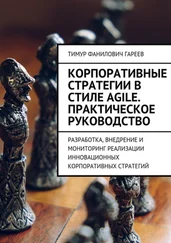Many in the Agile community also feel that if a facilitator makes a suggestion about the subject matter, they compromise their role as facilitator. But Socratic discussion uses hard questions, and posing such questions requires understanding of the subject.
One of us with expertise in a particular domain once worked for an organization facing serious challenges in that domain. Due to that organization's Agile practice's rigid definition of a neutral facilitator's stance, our expertise was ignored and minimized, to the detriment of the product under development.
If someone has expertise or good ideas, they should be free to share those!
Effective leaders often do manage to facilitate discussions well, even when they inject ideas of their own. What matters is how it is done, whether those in the room feel that the leader is open to challenge, and that the best idea will win, no matter who it comes from.
The need to inspire people is important to be able to truly tap people's full ability. Leaders who threaten people get only the minimum effort required to avoid punishment. If people's motivation derives from a belief in the inherent value of the work, because either it benefits them or it benefits others who they feel are worthy, then people will try their best. Motivation can also come from other needs, such as feeling of fulfillment or an opportunity to be creative. These are all positive sources, while fear of discipline is a negative one.
Applicability and Trade-Offs
A team of people is a group that is organized for a purpose. A team often needs many kinds of leadership. First, each person needs to be their own leader: each person has agency, and they need to take responsibility for their own outcomes, voicing problems, trying to get those problems solved to the best of their ability, and—if it comes to it—deciding whether to remain in the group. Some groups sometimes are not a good fit for a particular individual, and vice versa. That is just the reality.
Besides individual leadership over oneself, a team often needs leadership. For example, it might need coordinating leadership; it might need coaching leadership to help it to grow its abilities; it might need thought leadership about particular domains of knowledge that are mission critical; and it might even need some directive leadership for some issues.
Peter Drucker has said that an organization needs “an inside person, an outside person, and someone to get things done.” In other words, one kind of leader is not enough. That does not mean that one person cannot fill all those roles; but such an individual is unusual.
By an “inside person,” Drucker meant someone who can form relationships of trust with the members of the organization, someone they look up to. For a technology company, that individual might be a visionary CTO, or it might be a visionary product designer. In the case of Apple Computer, Steve Jobs was the CEO, but he was also the chief product designer and was widely seen as a visionary, so he was the inside person. When he returned to Apple, he was greeted as a savior, and many people worked at Apple only because it was led by Steve Jobs.
By an “outside person,” Drucker meant someone to deal with the outside world. Any organization or team exists in a larger ecosystem, and that ecosystem can be leveraged, or it can undermine the organization or team. Managing the relationship with the world outside of the team or organization is essential. To do that, one must have some level of authority to be able to make promises, to negotiate deals, and to invest in resources. One must also be adept at managing expectations and coming across as personable, trustworthy, competent, and visionary to some degree.
The third role described by Drucker was “someone to get things done.” That is the organizer. Within a team, an organizer might not need much or any authority, but the higher one goes in an organization, when a team member in turn oversees other subordinate teams, authority is increasingly important because without it, one cannot make decisions on behalf of one's subordinate teams. An organizer is someone who stays on top of everything, continuously watches for problems, takes action as soon as there is a problem, and orchestrates discussion and timely decision-making.
A recurring theme here is when to use one's authority and when to let subordinates decide. Hold that question in your mind as you read this, and we will address it at the end of this chapter, because it is the most important question about leadership, and it ties everything together.
A Socratic leader casts themself as a fellow learner and asks questions and engages in discussion. The outcome of the Socratic process is getting the team to buy into the ideas they agree to as if they thought of them—and indeed they did, even if the leader felt certain about where the consensus would end up (or not).
A Socratic leader needs to understand the subject matter that is being discussed; otherwise, they are not able to ask deep questions, especially follow-up questions.
A particular challenge with the Socratic method is that some people are not good at thinking “on their feet,” and so they might not be able to articulate their thoughts in real time. Thus, this method must not be used alone for discussing complex issues; those who need to think “offline” must be allowed to do so and then share their thoughts in a follow-up meeting.
Also, some people will not speak up in a group, and so a Socratic leader must watch for those who stay silent and proactively ask them for their opinion.
The Socratic method is time-consuming but leads to a deep understanding of the issue by all team members and a strong feeling of investment in the final consensus if everyone feels their contributions were fairly considered. Those who do not agree with the consensus will usually be willing to go along with it because the resolution was reached through a fair and logical process.
Sometimes a team is unable to reach a consensus. When that happens, if a resolution is needed, a leader might be required to arbitrate and make the final decision.
Voting is not recommended for important issues, because a vote indicates popularity of an idea, rather than determining whether the idea is best. If an arbitration is needed, the leader will need to decide and bear accountability for the outcome.
The term servant leader was coined by Robert Greenleaf in an essay in 1970. 16 He describes a servant leader as someone who becomes a leader by showing that they have the interests of the team at heart instead of their own and also by demonstrating competence.
Something that is often misunderstood about servant leadership is the idea that a servant leader is really just someone who facilitates or assists a team. In fact, Greenleaf clearly says in his essay that a servant leader leads and that the team follows but follows by choice.
A servant leader sometimes makes decisions that are not the choice of the team, but the team trusts the leader. In the book The Servant , James Hunter writes, “The leader should never settle for mediocrity or second best—people have a need to be pushed to be the best they can be. It may not be what they want, but the leader should always be more concerned with needs than with wants.” 17
There is a dilemma with servant leadership, in that the interests of the team might not be aligned with the interests of the organization; and so if the leader's authority rests upon the support of the team, then the leader might not be able to make choices that favor the organization at the expense of the team—at least, not too often.
Читать дальше











